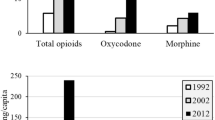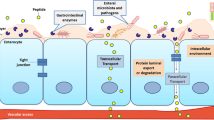Abstract
Purpose. The characteristics of bile canalicular transport processes for xenobiotic taurine conjugates have not yet been clarified. To elucidate the biliary excretion characteristics of xenobiotic taurine conjugates, we investigated the transport of a novel thromboxane A2 receptor antagonist, Z-335, and its taurine conjugate (Z-335-Tau) across the bile canalicular membrane.
Methods. We examined the uptake of Z-335 and Z-335-Tau by isolated bile canalicular membrane vesicles (CMVs) from Sprague Dawley and Eisai-hyperbilirubinemic rats (EHBRs) which EHBRs have a hereditary defect of canalicular multidrug resistance-associated protein 2 (Mrp2) function. Also, the in vitro and in vivo kinetics of Z-335-Tau uptake and excretion were compared.
Results. Z-335 uptake by CMVs from normal rats exhibited marked ATP-dependence, whereas ATP-dependent uptake of Z-335 into CMVs from EHBRs was not observed. In contrast, Z-335-Tau uptake into CMVs from both normal rats and EHBRs was ATP dependent. The initial uptake velocity was concentration-dependent, with an in vitro Michaelis constant for initial uptake of 189 μM, which was similar to the in vivo value.
Conclusions. The biliary excretion of Z-335 involves Mrp2, whereas that of Z-335-Tau involves active transport systems that remain intact in EHBRs and show marked ATP dependence, which ATP-dependent transport is involved in the biliary excretion of Z-335-Tau in vivo.
Similar content being viewed by others
References
T. Tanaka, Y. Fukuta, R. Higashino, R. Sato, Y. Nomura, Y. Fukuda, S. Ito, M. Takei, T. Kurimoto, and H. Tamaki. Antiplatelet effect of Z-335, a new orally active and long-lasting thromboxane receptor antagonist. Eur. J. Pharmacol. 357:53-60 (1998).
T. Tanaka, S. Ito, R. Higashino, Y. Fukuta, Y. Fukuda, M. Takei, T. Kurimoto, and H. Tamaki. A new thromboxane receptor antagonist, Z-335, ameliorates experimental thrombosis without prolonging the rat tail bleeding time. Thromb. Res. 91:229-235 (1998).
Y. Kawabata, H. Nakamura, Y. Shinozaki, and H. Sano. Biliary excretion mechanism of the thromboxane A2 antagonist, Z-335. 119th Annual Meeting of the Pharmaceutical Society of Japan (April, Tokushima): p. 6(1999).
H. Matsuno, T. Uematsu, M. Niwa, O. Kozawa, S. Nagashima, K. Kohno, H. Kato, Y. Kawabata, Y. Yoshida, and M. Kanamaru. Pharmacokinetic and pharmacodynamic properties of a new thromboxane receptor antagonist (Z-335) after single and multiple oral administrations to healthy volunteers. J. Clin. Pharmacol. 42:782-790 (2002).
Y. Kawabata, S. Furuta, Y. Shinozaki, T. Kurimoto, and R. Nishigaki. Carrier-mediated active transport of a novel thromboxane A2 receptor antagonist 2-(4-chlorophenylsulfonylaminomethyl)-indan-5-yl acetate (Z-335) into rat liver. Drug Metab. Dispos. 30:498-504 (2002).
T. Gerloff, B. Stieger, B. Hagenbuch, J. Madon, L. Landmann, J. Roth, A. F. Hofmann, and P. J. Meier. The sister of P-glycoprotein represents the canalicular bile salt export pump of mammalian liver. J. Biol. Chem. 273:10046-10050(1998).
T. Nishida, C. Hardenbrook, Z. Gatmaitan, and I. M. Arias. ATP-dependent organic anion transport system in normal and TR- rat liver canalicular membranes. Am. J. Physiol. Gastrointest. Liver Physiol. 262:G629-G635 (1992).
M. Masuda. Y. I'izuka, M. Yamazaki, R. Nishigaki, Y. Kato, K. Ni'inuma, H. Suzuki and Y. Sugiyama. Methotrexate is excreted into the bile by canalicular multispecific organic anion transporter in rats. Cancer Res. 57:3506-3510 (1997).
M. Yamazaki, S. Akiyama, K. Ni'inuma, R. Nishigaki, and Y. Sugiyama. Biliary excretion of pravastatin in rats: contribution of the excretion pathway mediated by canalicular multispecific organic anion transporter. Drug Metab. Dispos. 25:1123-1129 (1997).
M. Bühler, J. König, M. Brom, J. Kartenbeck, H. Spring, T. Horie and D. Keppler. cDNA cloning of the hepatocyte canalicular isoform of the multidrug resistance protein, cMrp, reveals a novel conjugate export pump deficient in hyperbilirubinemic mutant rats. J. Biol. Chem. 271:15091-15098 (1996).
E. C. de Lange, G. de Bock, A. H. Schinkel, A. G. de Boer, and D. D. Breimer. BBB transport and P-glycoprotein functionality using MDR1A(-/-) and wild-type mice. Total brain versus microdialysis concentration profiles of rhodamine-123. Pharm. Res. 15:1657-1665 (1998).
M. Kawahara, A. Sakata, T. Miyashita, I. Tamai, and A. Tsuji. Physiologically based pharmacokinetics of digoxin in mdr1a knockout mice. J. Pharm. Sci. 88:1281-1287 (1999).
H. Kusuhara, H. Suzuki, T. Terasaki, A. Kakee, M. Lemaire, and Y. Sugiyama. P-Glycoprotein mediates the efflux of quinidine across the blood-brain barrier. J. Pharmacol. Exp. Ther. 283:574-580 (1997).
M. Piquette Miller, A. Pak, H. Kim, R. Anari, and A. Shahzamani. Decreased expression and activity of P-glycoprotein in rat liver during acute inflammation. Pharm. Res. 15:706-711 (1998).
J. J. Smit, A. H. Schinkel, R. P. Oude Elferink, A. K. Groen, E. Wagenaar, L. van Deemter, C. A. Mol, R. Ottenhoff, N. M. van der Lugt, M. A. van Roon, M. A. van der Valk, G. J. Offerhaus, A. J. Berns, and P. Borst. Homozygous disruption of the murine mdr2 P-glycoprotein gene leads to a complete absence of phospholipid from bile and to liver disease. Cell 75:451-462 (1993).
Y. Kawabata, H. Nakamura, E. Kamada, S. Furuta, Y. Shinozaki, T. Kurimoto, and R. Nishigaki. Mechanism of hepatobiliary transport of a novel thromboxane A2 receptor antagonist, 2-(4-chlorophenylsulfonylaminomethyl)indan-5-yl acetate (Z-335), and its xenobiotic taurine conjugate (Z-335-Tau) in rats. J. Pharm. Sci. 92:67-76 (2003).
K. Kobayashi, Y. Sogame, H. Hara, and K. Hayashi. Mechanism of glutathione S-conjugate transport in canalicular and basolateral ratliver plasma membranes. J. Biol. Chem. 265:7737-7741 (1990).
K. Yachi, Y. Sugiyama, Y. Sawada, T. Iga, Y. Ikeda, G. Toda, and M. Hanano. Characterization of rose Bengal binding to sinusoidal and bile canalicular plasma membrane from rat liver. Biochim. Biophys. Acta 978:1-7 (1989).
K. Sathirakul, H. Suzuki, T. Yamada, M. Hanano, and Y. Sugiyama. Multiple transport systems for organic anions across the bile canalicular membrane. J. Pharmacol. Exp. Ther. 268:65-73 (1994).
O. Takenaka, T. Horie, K. Kobayashi, H. Suzuki, and Y. Sugiyama. Kinetic analysis of hepatobiliary transport for conjugated metabolites in the perfused liver of mutant rats (EHBR) with hereditary conjugated hyperbilirubinemia. Pharm. Res. 12:1746-1755 (1995).
K. Yamaoka, Y. Tanigawara, T. Nakagawa, and T. Uno. A pharmacokinetic analysis program (multi) for microcomputer. J. Pharmacobiodyn. 4:879-885 (1981).
A. Tsuji, T. Yoshikawa, K. Nishide, H. Minami, M. Kimura, E. Nakashima, T. Terasaki, E. Miyamoto, C. H. Nightingale, and T. Yamana. Physiologically based pharmacokinetic model for β-lactam antibiotics I: tissue distribution and elimination in rats. J. Pharm. Sci. 72:1239-1252 (1983).
T. J. Simons. Vanadate—a new tool for biologists. Nature 281:337-338 (1979).
A. Morikawa, Y. Goto, H. Suzuki, T. Hirohashi, and Y. Sugiyama. Biliary excretion of 17β-estradiol 17β-D-glucuronide is predominantly mediated by cMOAT/MRP2. Pharm. Res. 17:546-552 (2000).
M. Horikawa, Y. Kato, C. A. Tyson, and Y. Sugiyama. The potential for an interaction between MRP2 (ABCC2) and various therapeutic agents: probenecid as a candidate inhibitor of the biliary excretion of irinotecan metabolites. Drug Metabol. Pharmacokin. 17:23-33 (2002).
T. Saeki, K. Ueda, Y. Tanigawara, R. Hori, and T. Komano. Human P-glycoprotein transports cyclosporin A and FK506. J. Biol. Chem. 268:6077-6080 (1993).
M. Maliepaard, G. L. Scheffer, I. F. Faneyte, M. A. van Gastelen, A. C. Pijnenborg, A. H. Schinkel, M. J. van de Vijver, R.J. Scheper, and J. H. Schellens. Subcellular localization and distribution of the breast cancer resistance protein transporter in normal human tissues. Cancer Res. 61:3458-3464 (2001).
M. Suzuki, H. Suzuki, Y. Sugimoto, and Y. Sugiyama. ABCG2 transports sulfated conjugates of steroids and xenobiotics. J. Biol. Chem. 278:22644-22649 (2003).
Y. Adachi, H. Kobayashi, Y. Kurumi, M. Shouji, M. Kitano, and T. Yamamoto. ATP-dependent taurocholate transport by rat liver canalicular membrane vesicles. Hepatology 14:655-659 (1991).
Author information
Authors and Affiliations
Corresponding author
Rights and permissions
About this article
Cite this article
Kawabata, Y., Kamada, E., Furuta, S. et al. ATP-Dependent Transport of a Novel Thromboxane A2 Receptor Antagonist, [2-(4-Chlorophenylsulfonylaminomethyl)-Indan-5-yl]Acetate (Z-335) and Its Xenobiotic Taurine Conjugate (Z-335-Tau) by Rat Bile Canalicular Membrane Vesicles. Pharm Res 21, 467–475 (2004). https://doi.org/10.1023/B:PHAM.0000019301.97624.5b
Issue Date:
DOI: https://doi.org/10.1023/B:PHAM.0000019301.97624.5b




